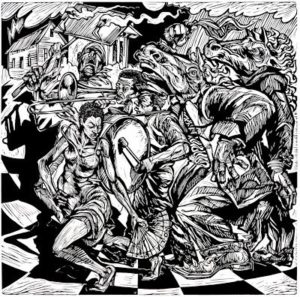“If you look the right way, you can see that the whole world is a garden”. ~The Secret Garden
Seeing is believing. That’s what we have been taught our entire lives; that our eyes are the one thing that is able to distinguish fact from fiction. But, what we are never told is that everyone sees differently. This goes beyond the literal sense, although it does provide the best explanation. Picture where you are now. Literally. Whether you are standing up, sitting down, or on the line at Starbucks, focus on your location and what YOU see. Now, imagine someone wants to stand in your exact spot, to see exactly what you see. Impossible isn’t it? It is physically impossible for two people to stand on the exact same spot at the exact same time, and even if the person was able to stand in your position after the fact, that person would still see different things, notice different aspects of the same surroundings. Their perspective would inevitably be different.
This idea of fluid perspective is something that has really interested me throughout the Art of Steve Prince course with Professor McCoy. What stands out to me is that the way I understand and evaluate topics are often very different from the viewpoints and analysis of other students in my class. I see and understand things the way Sarah-Anne Michel only could, and this unique perspective can be translated in almost any subject, idea, project that I venture on. But, what I have learned recently is that although I may never share the exact same perspective as those around me, it is possible to exercise my mind to be open to seeing things in perspective of others. Specifically, through art.
Recently, we had Professor Olympia Nicodemi come speak to us about how math serves in art through perspective. Specifically, she helped us to apply perspective when viewing Steve Prince’s work, “Flambeau“. I would just like to mention that before this lesson I had no idea what perspective meant in terms of art, much less how complex it was. Perspective is more than how you see something, it is also how much you are able to control how much of what you see. It is a mental exercise, training you to look deeper than what you immediately see and towards what the artist wishes for you to see. For example. In “Flambeau“, Nicodemi made the observation that the space is being controlled by the floor. Rather than seeing the floor in the perspective of the people on it, you see the people from the perspective of a wavy floor. This perspective was chosen by the artist, so that the focus of the piece was more on the characters in it and less on their surroundings. This really showed me the power of an artist. How an artist had the unique ability to show others what they want them to see and how they want them to see it. Artists are able to do the impossible: show people something in their perspective. And learning this was very eye-opening and interesting to me.

